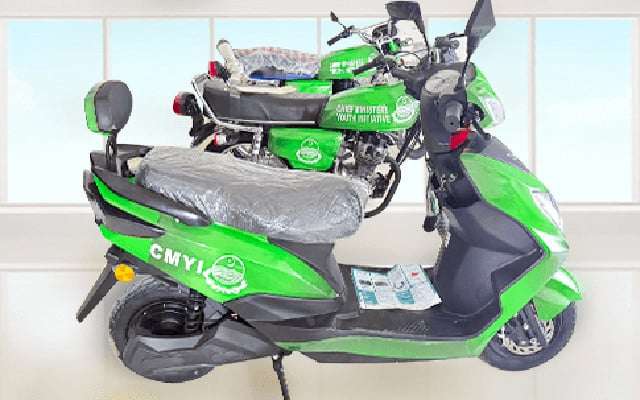E-Bike Revolution in Pakistan: A Road Yet to Be Taken
|
Getting your Trinity Audio player ready...
|
Introduction
The electric vehicle (EV) revolution is reshaping global transportation, offering a sustainable alternative to fossil fuel dependency. While India has embraced e-mobility with ambitious policies and large-scale adoption, Pakistan remains on the sidelines, despite having over 22 million conventional motorcycles—an ideal base for electrification.
This article explores why Pakistan lags behind in e-bike adoption, the potential benefits of transitioning to electric two-wheelers, and actionable steps the country can take to catch up.
The Global Shift Towards Electric Two-Wheelers
India’s Leadership in E-Mobility
India has taken significant strides in e-mobility through its National Electric Mobility Mission Plan (NEMMP) and Faster Adoption and Manufacturing of Hybrid and Electric Vehicles (FAME) schemes. These policies include:
- Subsidies and incentives for electric two-wheeler buyers.
- Tax benefits reducing the cost of ownership.
- Investment in EV infrastructure, with over 5,000 charging stations installed nationwide.
The result? India has become a global leader in e-bike adoption, with major manufacturers like Ola Electric, Ather Energy, and Bajaj revolutionizing the industry.
Pakistan’s Slow Adoption of E-Bikes
Unlike India, Pakistan’s progress in e-mobility has been slow, despite a rising demand for affordable transportation. Rising fuel costs and urban air pollution have piqued consumer interest in electric bikes, but adoption remains limited due to high initial costs and inadequate policy support.
However, local companies such as Jolta Electric and Road King have introduced e-bike models in the market, signaling the start of an electric transformation.
The Cost Factor: Are E-Bikes Affordable in Pakistan?
The biggest hurdle for e-bike adoption in Pakistan is affordability.
| Vehicle Type | Price in Pakistan (PKR) |
|---|---|
| Conventional 70cc Motorcycle | 120,000 – 160,000 |
| Entry-Level E-Bike | 170,000+ |
At first glance, e-bikes appear more expensive than fuel-powered motorcycles. However, long-term savings from zero fuel expenses and low maintenance costs make them a financially sound investment. With petrol prices fluctuating, e-bikes can save users thousands annually.
Lessons Pakistan Can Learn from India’s E-Bike Boom
Pakistan can accelerate e-bike adoption by adopting India’s successful strategies:
1. Government Subsidies for E-Bikes
India’s FAME subsidies have made e-bikes affordable to the masses. Pakistan could introduce similar schemes, reducing upfront costs for buyers.
2. EV Charging Infrastructure Development
India has installed thousands of charging stations nationwide. Pakistan needs a similar initiative to ease range anxiety for potential e-bike owners.
3. Domestic Production and Competition
Indian brands like Ola Electric and Ather Energy have driven innovation and cost reduction through competition. Encouraging local manufacturing in Pakistan can bring e-bike prices down.
4. Collaboration with Global EV Leaders
Pakistan can collaborate with China, the world’s largest EV producer, to import cost-effective EV components and set up local assembly lines.
Key Challenges Hindering E-Bike Growth in Pakistan
1. High Initial Costs
- Solution: Introduce government subsidies and tax exemptions on EVs.
2. Lack of Charging Infrastructure
- Solution: Install public charging stations in urban areas and petrol pumps.
3. Weak EV Policy Implementation
- Solution: Enforce the 2020 EV Policy with clearer incentives for two-wheelers.
4. Public Skepticism
- Solution: Launch public awareness campaigns about the cost savings and benefits of e-bikes.
5. Energy Crisis & Load Shedding
- Solution: Encourage solar-powered EV charging to reduce grid pressure.
The Future of E-Bikes in Pakistan
Why E-Bikes Are the Future
With rising urban air pollution and increasing fuel costs, transitioning to electric motorcycles is not a luxury but a necessity.
- Environmental Impact: Reduces carbon emissions and improves urban air quality.
- Economic Benefits: Lowers fuel import dependency, saving billions in foreign exchange.
- Job Creation: Local e-bike manufacturing can create thousands of jobs.
Pakistan’s Opportunity in the Global EV Market
The global EV market is expected to grow exponentially in the next decade, with Asia leading the way. If Pakistan invests in e-bike production and infrastructure, it can emerge as a regional EV manufacturing hub.
FAQs
1. Are e-bikes cheaper than petrol bikes in the long run?
Yes, while e-bikes have a higher initial cost, they save users money through zero fuel expenses and minimal maintenance costs.
2. Where can I charge my e-bike in Pakistan?
Currently, charging stations are limited, but many e-bikes can be charged at home using a standard electrical outlet.
3. Can e-bikes handle long distances?
Most e-bikes in Pakistan have a range of 60-100 km per charge, making them ideal for daily commuting.
4. Is the Pakistani government offering any incentives for e-bikes?
As of now, there are minimal incentives, but future policies may introduce subsidies and tax exemptions.
5. Will e-bikes work during power outages?
E-bikes rely on electricity, but users can charge them during off-peak hours or use solar-powered charging solutions.
Conclusion: Time for Pakistan to Embrace the E-Bike Revolution
The global shift towards electric mobility is unstoppable. While India has taken the lead, Pakistan still has the chance to catch up and build a thriving EV ecosystem. By investing in local manufacturing, charging infrastructure, and policy support, Pakistan can pave the way for an eco-friendly, cost-effective, and sustainable transport future.
The question is not if Pakistan will embrace e-bikes but when—and whether it will seize the opportunity before it’s too late.




